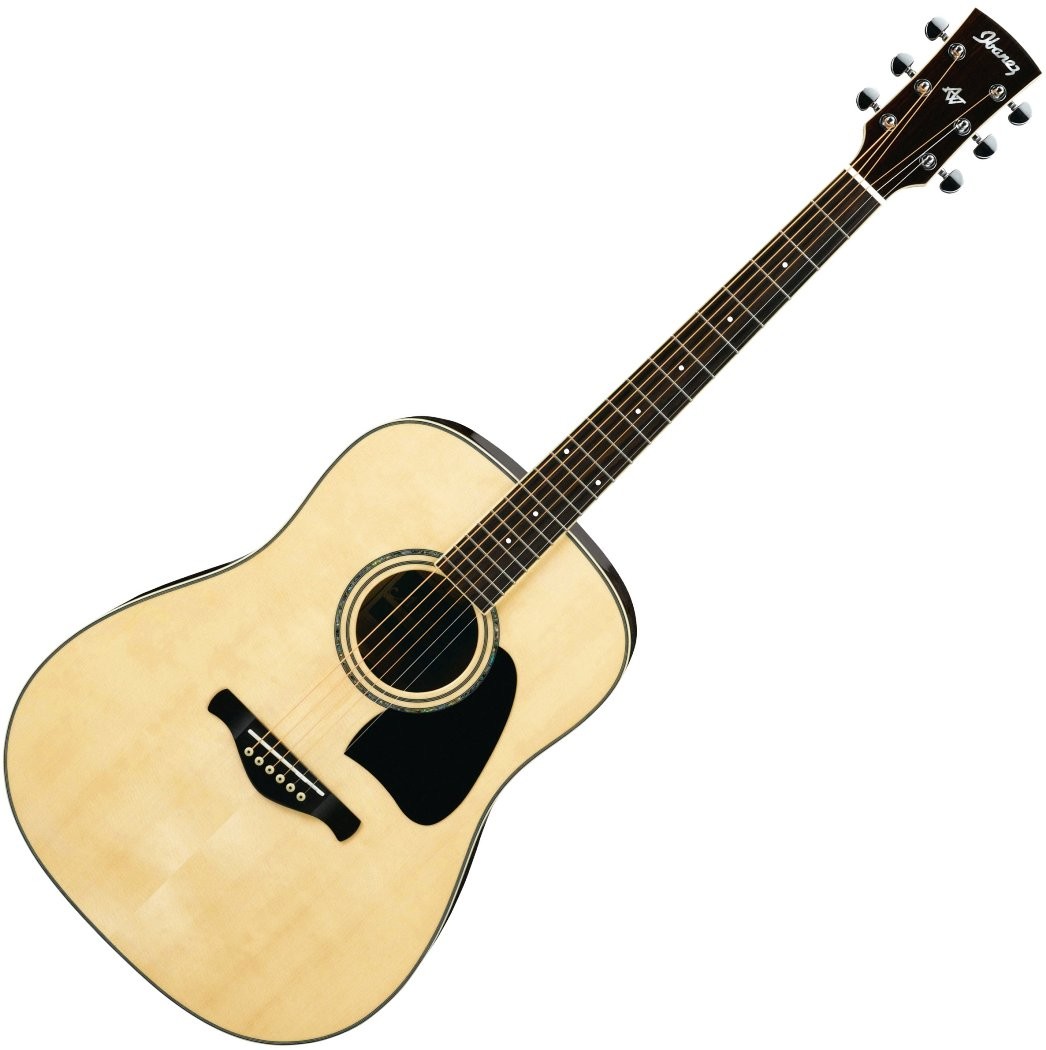|
The acoustic guitar's soundboard, or top, also has a strong effect on the loudness of the guitar. No amplification actually occurs in this process,
in the sense that no energy is externally added to increase the loudness of the sound (as would be the case with an electronic amplifier). All the energy
is provided by the plucking of the string. But without a soundboard, the string would just "cut" through the air without actually moving it much. The
soundboard increases the surface of the vibrating area in a process called mechanical impedance matching. The soundboard can move the air much more easily
than the string alone, because it is large and flat. This increases the entire system's energy transfer efficiency, and a much louder sound is emitted.
In addition, the acoustic guitar has a hollow body and an additional coupling and resonance effect increases the efficiency of energy transmission in lower
frequencies. The air in a guitar's cavity resonates with the vibrational modes of the string and soundboard. At low frequencies, which depend on the size of
the box, the chamber acts like a Helmholtz resonator, increasing or decreasing the volume of the sound again depending on whether the air in the box is moving
in phase or out of phase with the strings. When in phase, the sound is increased by about 3 decibels and when in opposing phase, it is decreased about 3 decibels.
As a Helmholtz resonator, the air at the opening is vibrating in or out of phase with the air in the box and in or out of phase with the strings. These resonance
interactions attenuate or amplify the sound at different frequencies, boosting or damping various harmonic tones. Ultimately, the cavity air vibrations couple to
the outside air through the sound hole, though some variants of the acoustic guitar omit this hole, or have f holes, like a violin family instrument
(a trait found in some electric guitars such as the ES-335 and Lucille models from Gibson). This coupling is most efficient because here the impedance matching
is perfect: it is air pushing air.
There are therefore several sound coupling modes in an acoustic guitar: string to soundboard, soundboard to cavity air, and both soundboard and cavity air,
to outside air. The back of the guitar will also vibrate to a lesser extent, driven by the air in the cavity. The function of the entire acoustic system is
twofold: to color the sound through the generation and amplification of harmonics, and to maximize the coupling of this energy to the surrounding air — which
is ultimately what we perceive as loudness of the produced sound. Improved coupling, however, comes at the expense of decay time, since now the string's energy
is more efficiently transmitted. An unamplified guitar (one with no soundboard at all) would have a low volume, but the strings would vibrate much longer, like
a tuning fork.
All these complex air coupling interactions, along with the resonant properties of the panels themselves, are a key reason that different guitars will have different
tonal qualities. The sound is a complex mixture of harmonics that give the guitar its distinctive sound.
|
